Torque wrenches were born as a necessity. These tools powered the automotive industry like never before, improving the performance of workers on an assembly line. However, the high demand for cars and other products demanded the invention of a more powerful and faster tool.
The solution to the problem came with the invention of the first impact wrench. These tools let you apply high torque without effort. While in the past workers had to use muscular force to tightening or loosening bolts, now they only needed to pull a trigger to get the job done.
If you’re curious to learn more about these wonderful tools, you’re certainly in the right place. Today we’ll explain you how does an impact wrench work and we’ll show you all the different types currently available on the market. Finding the best impact wrench for you will be much easier once you go through this guide.
Electric impact wrenches are powered by electricity. They can be corded or cordless. Corded models need to be plugged into an outlet to work. They’re very powerful but not practical when you need to use them in places away from electric power sources.
On the other hand, cordless models use a brushless motor powered by a nickel-cadmium or lithium battery. Brushless motors have a superior lifespan because they don’t produce friction between the rotor and the stator. This means less waste, less noise, and less maintenance.
However, brushless motors aren’t as powerful as conventional electric motors. So, the torque generated by a cordless impact wrench is quite limited compared to a corded impact wrench. Also, batteries tend to discharge too quickly, forcing you to stop during work to recharge.
Cordless models are a lighter and more portable option compared to corded impact wrenches. Also, they’re perfect to work on difficult corners where working with an electric cord is uncomfortable.
Pneumatic impact wrenches are powered by compressed air. So, they necessarily need to be connected to an air compressor to work. Pneumatic models are much more powerful than the electric types when compared, but they’re much more difficult to transport.
So, they necessarily need to be connected to an air compressor to work. Pneumatic models are much more powerful than the electric types when compared, but they’re much more difficult to transport.
So, if you intend to carry your pneumatic tool to different places, make sure the air compressor has big and resistant wheels.
Unlike electric models, pneumatic impact wrenches don’t let you to adjust torque. So, it isn’t recommended to use them on rusted bolts, because excessive torque may break them.
Hydraulic impact wrenches are the most powerful of all. They’re stationary and are usually used for industrial purposes. These tools are powered by hydraulic fluid pumped at high pressure.
Impact wrenches use a motor and a spring to accelerate a rotating mass known as a hammer (no, we are not talking about the framing hammer). During this process, the hammer hits the output shaft (also known as anvil) to generate torque impact.
In a single revolution, the hammer hits once or twice the anvil. Those models that deliver only one hit per revolution can generate more torque than the rest.
Usually, the hammer is able to rotate and slide on a pivot while a spring holds it at the bottom. There’s also a steel ball between the anvil and the hammer. This steel ball slides the hammer backwards and compresses the spring at the bottom if the input shaft spins ahead of the hammer.
Below the hammer there are metal teeth that lock the hammer, turning the acceleration into torque impact. When the hammer stops, the input shaft keeps turning and slides the steel ball forward. At this point, the hammer and spring are released to restart the cycle.
When there’s no high load on the rotating head of the wrench, the ball won’t compress the spring and the impact wrench will run smoothly as a common drill.
On other models, there are two pins on the input shaft that work as clutches. In this configuration, the metal ball compresses the pins against a spring. When the pins slide outwards, they hit the anvil and generate torque impact. In this case the hammer speeds up much more and applies more torque. However, the higher impacts also tend to damage the teeth.
When the pins slide outwards, they hit the anvil and generate torque impact. In this case the hammer speeds up much more and applies more torque. However, the higher impacts also tend to damage the teeth.
Another configuration uses a swinging weight and a protrusion around the anvil’s pivot. While the hammer rotates, the swinging weight is placed in position for impact after hitting the anvil. Finally, the swinging weight transfers the energy of the impact to the rotating head of the wrench.
This configuration delivers a single hit per revolution, which means a greater torque generation. However, it also transfers too much vibration, which is annoying for some users.
As you can see, not all impact wrenches work the same way. There are at least three different ways to generate torque for safely tightening and loosening bolts. However, in each case, the principle is always the same. A rotating hammer that hits an anvil and transfers the energy of the impact to the spinning head of the wrench.
Now that you know how does an impact wrench work, you can quickly identify each of its parts and the possible causes of a certain failure. Indeed, the more you know your tool, the better prepared you’ll be to properly use it.
Q. 1: Is it possible to use an impact wrench as a drill?
Yes. You can adapt a drill bit to your impact wench to use it as a drill. However, in these cases it’s recommended to use a model with a torque adjustment system.
Q. 2: Can you use an impact driver as an impact wrench?
Yes. An impact wrench can perform all the basic functions of an impact driver. However, impact wrenches are much more powerful than impact drivers.
Q. 3: What is the best compressor for an impact wrench?
It all depends on the air pressure and the CFM required by your wrench. You can find these requirements on the user manual of the product.
Q. 4: Is it possible to use an impact wrench to loosen lug nuts?
Yes. You can use a torque wrench for loosening and tightening lug nuts. If you intend to use an air impact wrench, you should be careful to not exceed the applied torque so as not to break the nuts.
You can use a torque wrench for loosening and tightening lug nuts. If you intend to use an air impact wrench, you should be careful to not exceed the applied torque so as not to break the nuts.
Q. 5: What is the main purpose of impact wrenches?
Impact wrenches were initially created for tightening and loosening bolts without the application of muscular force. However, modern models can also work as drills and impact drivers.
Q. 6: When it isn’t recommended to use an impact wrench?
It isn’t recommended to use an impact wrench when the minimum torque generated by the tool exceeds by far the torque required by the bolts. It’s also not recommended to use them when the bolts are rusted or visibly damaged.
Impact wrenches or impact guns are one of the most powerful handheld power tools. It is widely used by car mechanics to undo and tighten lug nuts of tires.
Table of Contents
Contents
An impact wrench is a power tool used for loosening or tightening lug nuts, large bolts, and frozen or rusted fasteners. They provide a very high rotational torque that a regular power driver cannot provide. Impact wrenches achieve this by an internal hammering mechanism that transfers kinetic energy onto the output shaft.
I will explain the working principle of an impact wrench in the next section. They work similar to an impact driver. You could call an impact wrench as a bigger brother of the impact driver. However, there are some differences which I have written in a previous article. You can read impact driver vs impact wrench for a more detailed explanation.
Impact wrenches are widely used in automotive industries. The most common use that we all come across is the removal lug nuts when we change the car tires. It is a must have power tool for all the vehicle repair shops and automotive body shops. Other uses of impact wrench include assembly of automobiles, heavy equipment assembly, and maintenance, manufacturing of machine tools, large construction projects etc.
Impact wrenches have square shaped output shaft. They are available in different sizes; the most widely used is the ½-inch square ones.
Imagine you want to loosen a frozen bolt or stubborn nut with a hand wrench. With the normal force applied by hand, the nut may not break loose. But what if you hit the wrench with a hammer? With enough number of hammer blows the rusted nut will break loose. In simple terms, this is what happens inside an impact wrench.
With the normal force applied by hand, the nut may not break loose. But what if you hit the wrench with a hammer? With enough number of hammer blows the rusted nut will break loose. In simple terms, this is what happens inside an impact wrench.
Impact wrenches are powered by electric motor or compressed air. Since the air impact wrenches are most popular, let’s take a look at its working principle. Shall we?
The power source will drive the rotor and the rotor in-turn will drive the hammer and the hammer cage. During the operation when there is no resistance on the anvil (output shaft), the driving motor power is transferred to the anvil. But what makes impact tools special is the hammer mechanism inside that actuates when the force is not sufficient.
So when the anvil faces resistance, the hammer slips from the engaging pin. This causes it to rotate at a higher velocity and hence higher energy gets stored. And then as it rotates, it is suddenly connected to the anvil. This sudden impact of the rotating hammer transfers the kinetic energy stored inside the hammer to the anvil. The result is a very high twisting force (torque) on the output shaft.
This sudden impact of the rotating hammer transfers the kinetic energy stored inside the hammer to the anvil. The result is a very high twisting force (torque) on the output shaft.
Once the sudden blow of energy is consumed, the output shaft may face resistance again. In that case, the hammer slips again and starts rotating and the cycle repeats itself. These cyclic blows are what make the impact wrench so powerful.
Impact wrenches can be classified according to the power source used. Electricity and compressed air are the most commonly used source to power impact guns. Hence we have corded electric, cordless impact wrenches and air impact wrenches in the market.
These are electric impact wrenches that you need to plug into the electricity socket to power them up.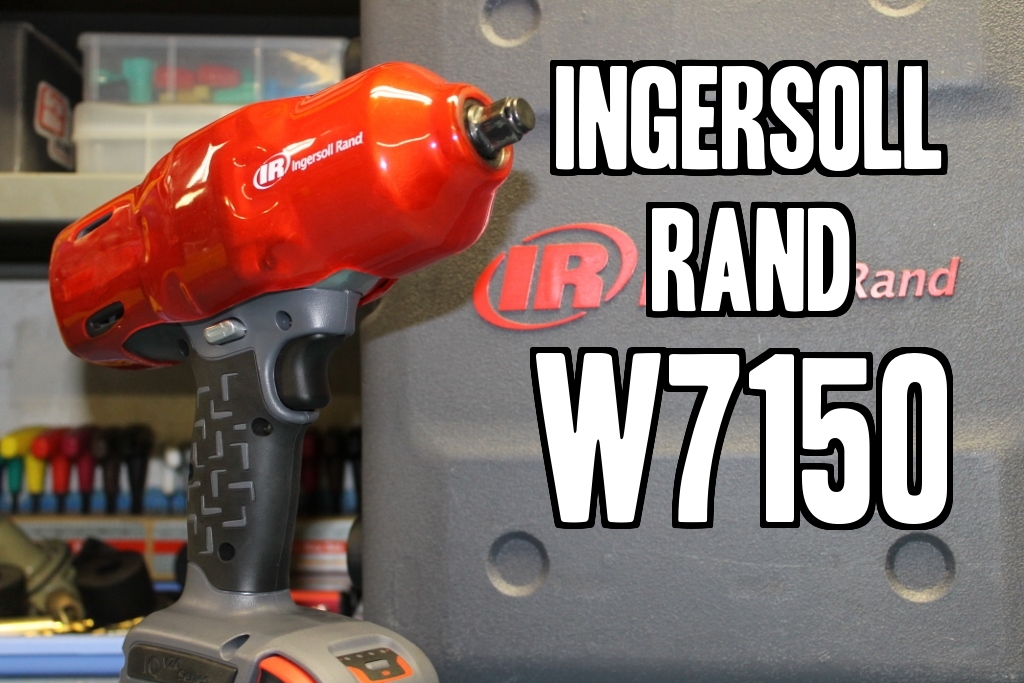 An electric motor fitted in the rear end of the tool drives the hammer units which transfers its motion to the output shaft.
An electric motor fitted in the rear end of the tool drives the hammer units which transfers its motion to the output shaft.
A battery powered impact wrench has one unique advantage over the other types. It is highly portable. You can throw-in one in your car trunk (boot if you are from the UK) and use it anytime you want to change the tires. The cordless design also enables it to be used in tight work-spaces where a corded or air pipe can be a hindrance.
However, the rechargeable batteries in a cordless impact wrench can get drained pretty quickly especially if you use it continuously on stubborn nuts and bolts.
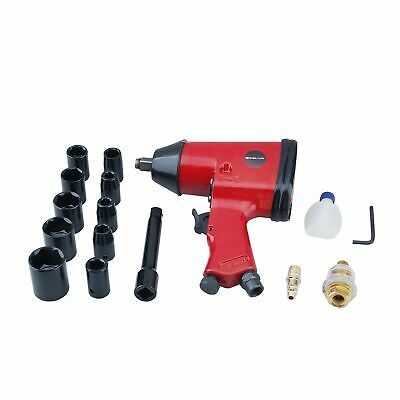
If you decide to buy a cordless impact wrench, then get the one with a brushless motor. They are more efficient and produce less heat during operation. Also, get extra Li-ion rechargeable batteries.
These are compressed air powered impact wrenches. Pneumatic or air impact wrenches are widely used in automobile repair shops, automotive assembly lines, heavy equipment manufacturing etc. They have some distinct advantages when compared to electric wrenches.
An air impact wrench is simple in engineering design and hence they are relatively inexpensive. Since there are no electronic or electric parts, the chances of a malfunction are very rare. But the biggest advantage is that unlike its counterpart the air impact wrench won’t get heated. Any heat generated by the rotating elements inside the impact gun is cooled by the circulating compressed air. This makes the air impact wrench ideal for assembly lines since it can be used for long working hours continuously without worrying about overheating.
This makes the air impact wrench ideal for assembly lines since it can be used for long working hours continuously without worrying about overheating.
The overheat protection by the air flow and relatively simpler design makes air impact wrenches more durable. Additionally, they are easy to repair and maintain.
The obvious downside is that air impact wrenches need a continuous supply of compressed air. Most auto body shops and manufacturing units will have large air compressor units and to provide the adequate supply of compressed air at constant pressure. However, the small portable compressor found at the average DIY enthusiast’s garage may not be sufficient for heavy jobs. It will be frustrating to start working with your pneumatic impact wrench and then wait for minutes before the compressed air reaches the adequate pressure to let you continue with your work.
In addition to the standard ½ inch square shank, pneumatic impact wrenches also come with 3/8 inch, ¾ inch, and 1-inch shanks.
Lack of speed control is something that you should consider. The pneumatic impact wrench I use has just two controls.
One is the on-off trigger. The second one is a forward-reverse switch which also works an air-flow regulator. When less air is allowed to go inside the wrench in effect it changes the output torque. However, this is not an accurate control like the electronically controlled speed regulators found in corded and cordless impact wrenches.
You already know the main difference between the electric impact wrench and the pneumatic one is the power source. But how do they affect the end user? Here is a quick comparison chart of the different types of impact wrenches.
| Cordless Impact Wrench | Air Impact Wrench | |
| Power Source | Battery | Compressed Air |
| Pros | Highly portable.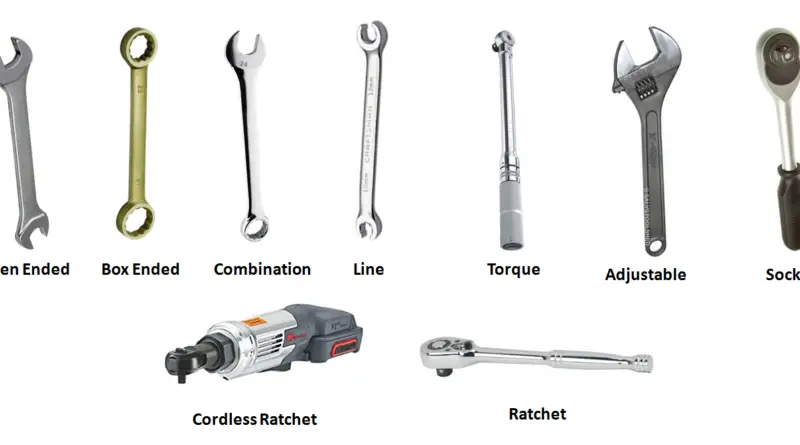 Not obstructed by electric cable or air pipe. Better controls. Not obstructed by electric cable or air pipe. Better controls. | Smaller & Lighter. More powerful. Affordable. No overheating. |
| Cons | Expensive. Not suitable for continuous use due to heat generated by moving parts. | Require air compressor. Less mobility. |
| Working Principle | Impact force in rotational and spring force in the axial direction. | Hammer impacts only in rotational direction. |
| Controls | Accurate speed control | Minimal speed control by adjusting air flow |
| Uses | DIY, Car tire changing, Home improvement, Construction | Auto repair, Assembly lines, maintenance of heavy equipment |
Note: The air impact wrenches are smaller compared to m cordless impact wrenches. Hence it can go into a tight workspace. However, this advantage to be able to work in tight spaces should be taken only after considering the disadvantage of air connection required.
Compared to power drills and saws, power wrenches are relatively safer to use. However, there are few precautions you must take as a part of the safe working procedure.
Beware of electric shock hazard while using a corded impact wrench. The cordless version also poses risk arising from damaged batteries and short-circuits. However, they are not life-threatening like cored wrenches.
If the nut or bolt is too stubborn the wrench socket will get stressed. Always use the correct impact sockets. These sockets have thicker walls and are hardened and tempered to slightly lower hardness to avoid shattering. You should also wear goggles to protect your eyes.
The average impact wrench produces approximately 90 – 100dB noise pollution. According to the white paper published by Hytorc on the effects of vibration on workers, If you use an impact gun with 100dB noise level it takes only 15 minutes of usage to reach the maximum allowable limit. In contrast you can work nearly 8 hrs with an impact wrench that produce 85dB(A) noise.
In contrast you can work nearly 8 hrs with an impact wrench that produce 85dB(A) noise.
The hammer inside the impact wrench will produce loud noise. I strongly recommend you to wear ear protection equipment such as safety ear muffs or earplugs. While you may not see the mechanic at the car changing shop wearing it, hearing protection is very important for anyone using impact wrenches for more than a couple of minutes.
The impact wrenches are highly useful for removing rusted bolts, over-torques nuts and for driving fasteners that require very high torque force.
Impact wrench: Buy an impact wrench if you are doing auto repair, maintenance of heavy machinery and equipment, manufacturing and assembly units and large construction projects.
Impact Driver: Not everyone needs the power of an impact wrench. DIY enthusiasts, handymen, and hobbyists will find an impact driver or even a cordless drill/driver more useful.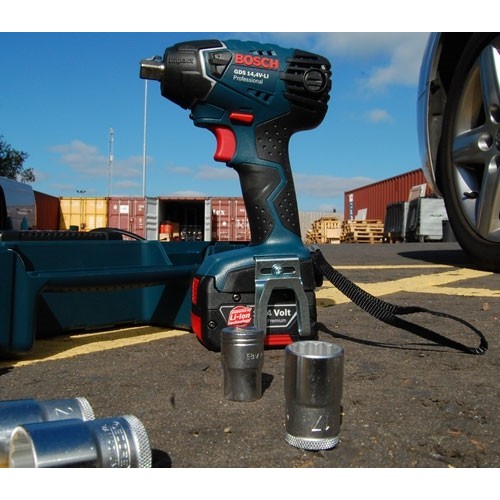
Home » Drills and Drivers
Threaded connections are quite capricious. As soon as a certain layer of corrosion forms on the thread, it becomes problematic to unscrew the nut or unscrew the bolt. There is even such a term: "the carving has become boiled." Although this process has nothing to do with boiling. This is a process associated with corrosion, in which a layer of rust forms between the threads, and the friction in the threaded connection increases so much that it is impossible to unscrew the nut or bolt without destroying this thin layer between the threads. You can try to unscrew it in the traditional way, but then there is a danger that the edges on the bolt head or nut will be torn off.
And the destruction of the “sticky” layer occurs due to the shock loads that this type of wrench creates. The high frequency of shock loads is able to move almost any threaded connection without much physical effort on the part of a person. And then the process of unscrewing goes like clockwork.
And then the process of unscrewing goes like clockwork.
You can, of course, pour a special active liquid into each threaded connection, which will partially corrode the layer of deposits between the threads. But the active fluid works very slowly, and the dissolution of deposits is also slow. And with the use of an impact pneumatic wrench, everything happens very quickly.
Inside the wrench, two power units can be distinguished that operate in different modes. The first block is responsible for the rotation of the wrench head. The second block is for creating shock loads. Rotation occurs through the use of compressed air. Compressed air enters through a hose from the compressor.
There are two channels inside the wrench body that direct the compressed air in different directions with respect to the turbine blades. One air direction gives forward rotation. The second direction of air flow gives reverse rotation. The direction of the air and, accordingly, the direction of rotation is given by a special switch that distributes the air flows.
The direction of the air and, accordingly, the direction of rotation is given by a special switch that distributes the air flows.
From the turbine, through the rotor, rotation is transmitted to the working head of the wrench and to the impact mechanism, which consists of two cams (hammers). The cams have a rather complex configuration. If at the moment of unscrewing there is not enough torque to unscrew the nut, the impact force, which is formed by two cams, helps. In the twisting mode, in many models of an impact wrench, the cams (hammers) do not work. Those. the spinning process proceeds normally. There are also systems where only one impact cam is used, and not two.
The cam impact mechanism is an analogue of a conventional clutch, which starts to work only if certain conditions occur, namely, the appearance of a certain force when unscrewing or tightening. Up to this point, until the force has reached its maximum values, the impact system works like a traditional clutch that transmits rotation.
The main difference lies in the torque that the pneumatic impact wrench creates. The amount of torque a wrench will have depends on the size of the turbine and the number of blades, as well as how much pressure the blower creates. The more powerful the compressor, the more force can be applied to the wrench.
In addition, the difference lies in the size and shape of the working head of the impact wrench. Some models are available with interchangeable heads to fit different sizes of nuts or bolt heads.
The use of an air impact wrench greatly reduces the time required to tighten or loosen threaded connections. The impact wrench is able to cope with any, even heavily clamped and oxidized threaded connection. Moreover, all the loads will fall on the tool, and not on the person.
For convenience, pneumatic wrenches can be equipped with additional handles located perpendicular to the axis of the wrench. Moreover, additional handles can often be rearranged in one direction or another.
Moreover, additional handles can often be rearranged in one direction or another.
The pneumatic impact wrench is significantly lighter than its electric counterpart. This is due to the fact that the air motor, which is installed in this type of nutrunner, is itself lighter than an electric motor, but no power is lost. It is much easier to work with a light tool.
In addition, a pneumatic wrench does not get as hot during operation than an electric wrench.
Another advantage is the ability to connect several pneumatic tools to one compressor at once. Naturally, if the compressor is able to create the right pressure and the right amount of air.
First of all, these are large enterprises, namely assembly shops. Where there is a lot of installation and dismantling work associated with threaded connections. There, all the wrenches are connected to a powerful pneumatic line. In workshops that are engaged in tire fitting operations or similar operations related to tightening and unscrewing threaded connections.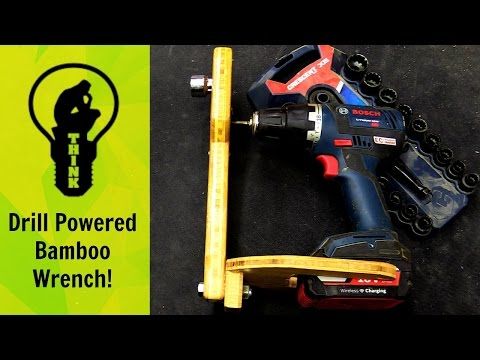 For example, these are car services that deal with the collapse of the convergence of the chassis of a car, operations related to the repair of car suspension.
For example, these are car services that deal with the collapse of the convergence of the chassis of a car, operations related to the repair of car suspension.
In domestic conditions, most likely, it is irrational to use an impact pneumatic wrench. Although there are situations when it is impossible to unscrew a nut or bolt without this tool. But if you approach from the point of view of the cost of acquiring the entire set of equipment, then it is the compressor, and not the wrench itself, that will cost a lot of money.
A portable electric impact wrench often helps in the work of a car mechanic or builder, because they have to tighten nuts of various diameters and complexity, and the reliability of the manual method using a wrench is not always at a high level.
Why percussion? It is that this tool provides maximum torque! The whole process takes place without the efforts of the worker. In order for a specialist to cope with the task, it is necessary to choose the right tool. Impact wrenches can be divided into several types, the first we will consider pneumatic. This tool is powered by compressed air. Screw fastener sizes for this wrench range from 1/4 to 1 inch. This device is used in various industries, starting with a regular car service and ending with a major overhaul.
In order for a specialist to cope with the task, it is necessary to choose the right tool. Impact wrenches can be divided into several types, the first we will consider pneumatic. This tool is powered by compressed air. Screw fastener sizes for this wrench range from 1/4 to 1 inch. This device is used in various industries, starting with a regular car service and ending with a major overhaul.
The principle of operation is based on the laws of physics. At the moment when the hammer, hitting the output shaft, by inertia directs its force to the shaft, and a torque is generated. It is worth considering that the design of the tool is designed in such a way that during the impact, the specialist almost does not feel vibration on the handle. This principle is similar to the situation in which we, having taken an ordinary hammer, would begin to swing it, and when the amplitude would reach a maximum, we would lower the hammer on the object.
Also an undoubted advantage of the pneumatic wrench is the absence of a mains connection.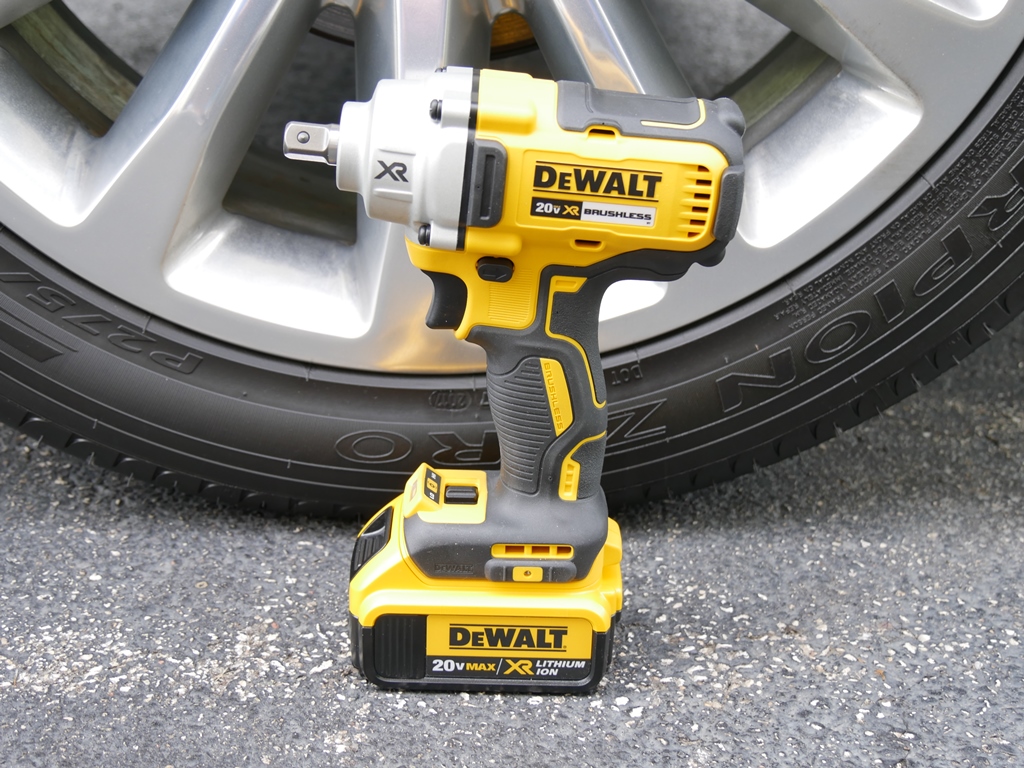 This allows it to be used in environments where network access is not possible. The main positive characteristics of such a tool can be considered high accuracy and high speed. The combination of these two factors makes it indispensable. For example, if you come to a car service to change tires, for this you should remove the disks, if the disks are removed manually, then it will take a lot of time. If the working personnel will use the pneumatic type of wrench, then the work will not take even five minutes.
This allows it to be used in environments where network access is not possible. The main positive characteristics of such a tool can be considered high accuracy and high speed. The combination of these two factors makes it indispensable. For example, if you come to a car service to change tires, for this you should remove the disks, if the disks are removed manually, then it will take a lot of time. If the working personnel will use the pneumatic type of wrench, then the work will not take even five minutes.
It is worth noting that it is compressed air that is the most popular source of energy for an impact wrench, this method allows you to achieve good results in terms of power, only with an impact tool you can sometimes unscrew long-rusted nuts.
Automotive Electric Impact Wrench allows you to perform many functions: tightening and unscrewing nuts, screws and other fasteners that have a thread. Unscrewing the fastener is only possible if the tool has a reverse function. The use of the electrical network is the source of power for its operation. This moment is its minus and plus at the same time. Also, this tool has a lot of advantages. It has a very large tightening speed range that can be controlled and adjusted. It is used in many tire fitting industries, as well as in some construction work.
Unscrewing the fastener is only possible if the tool has a reverse function. The use of the electrical network is the source of power for its operation. This moment is its minus and plus at the same time. Also, this tool has a lot of advantages. It has a very large tightening speed range that can be controlled and adjusted. It is used in many tire fitting industries, as well as in some construction work.
Cordless Impact Wrench is powered by a rechargeable battery that can be changed as needed. It is this version of the wrench that has gained great popularity among auto repair shops and ordinary amateur teams. The tool is simply indispensable in open space. Such a device has a lot of advantages over others. Firstly, it can be used even where there is no access to electricity or a compressor. Secondly, such tools, as a rule, have a lightweight body. Thirdly, the specialist can replace the battery with a charged one and continue working. The disadvantage of such a device is the acquisition of its additional elements - batteries.
The construction of an impact wrench is somewhat similar to that of a drill. A standard tool has an assembly that includes a handle, chuck and body. The device has the highest tightening force due to the fact that several hammers hit the shaft. A cordless tool is not a must have car tool, but no car owner would mind having one in their tool box. In appearance, it looks like an ordinary screwdriver, they also like to call it like this: “this is the thing that wheels are changed in Formula 1”.
Such a tool in the arsenal of a car enthusiast will not only help to quickly fix problems with the wheel without the participation of a specialist, but will also be a source of pride for the owner himself. Thanks to such a little thing, you can save on a trip to a car service and change tires yourself, for example, from summer to winter, or it will help if something irreparable happens - a wheel is punctured on the way. In addition, such a tool will be indispensable for builders, especially for those who deal with the assembly of metal structures.
In addition, such a tool will be indispensable for builders, especially for those who deal with the assembly of metal structures.
An impact wrench is more properly called a special tool. It is not required by home craftsmen in daily work, such as a drill or hammer. Its purchase will be justified only if the specialist uses it quite often due to his professional activity or lifestyle. For example, a buyer likes to travel long distances by car and often goes where car services are not available (mountains, forests, etc.).
Before using the tool, carefully read the instructions that come with it. It is there that you can find the sequence of preparation and operation, security measures and variations of breakdowns, as well as simple and affordable ways to fix them. Typically, these manuals differ only slightly from one another, except for the use of additional features that may be endowed with one or another model of impact wrench.
Before using the tool, carefully inspect it for external or internal damage. Connect the device to the network through the socket, press the button, after which the electric motor will start. Check the engine power with the selected operating mode. With regular use of the wrench, you should check for damage to the cable, inspect the rope mechanism, and test the serviceability of the latch. It is also worth evaluating the mechanical components operating on friction, the reliability of fastening components and parts.
Connect the device to the network through the socket, press the button, after which the electric motor will start. Check the engine power with the selected operating mode. With regular use of the wrench, you should check for damage to the cable, inspect the rope mechanism, and test the serviceability of the latch. It is also worth evaluating the mechanical components operating on friction, the reliability of fastening components and parts.
Like any tool, an impact wrench tends to break. Often the cause of a breakdown can be incorrect use, that is, improper preparation. For example, if the tool overheats, then, of course, this is not fatal, it will start working, but this is already a hint that you have been working for too long and are not giving the device the rest it needs. The maximum operating time that can be sustained by the tool is indicated in its technical characteristics. Another common mystery is when the tool does not start when the wrench is connected to the mains.